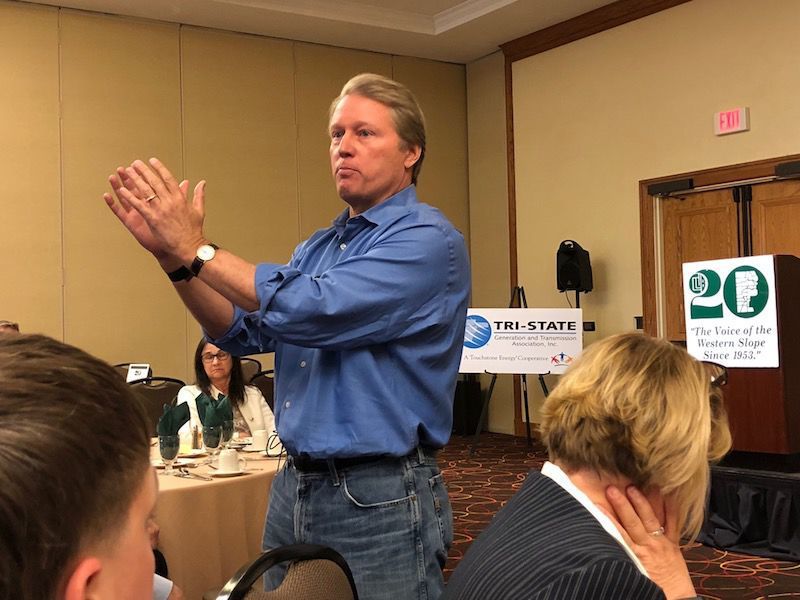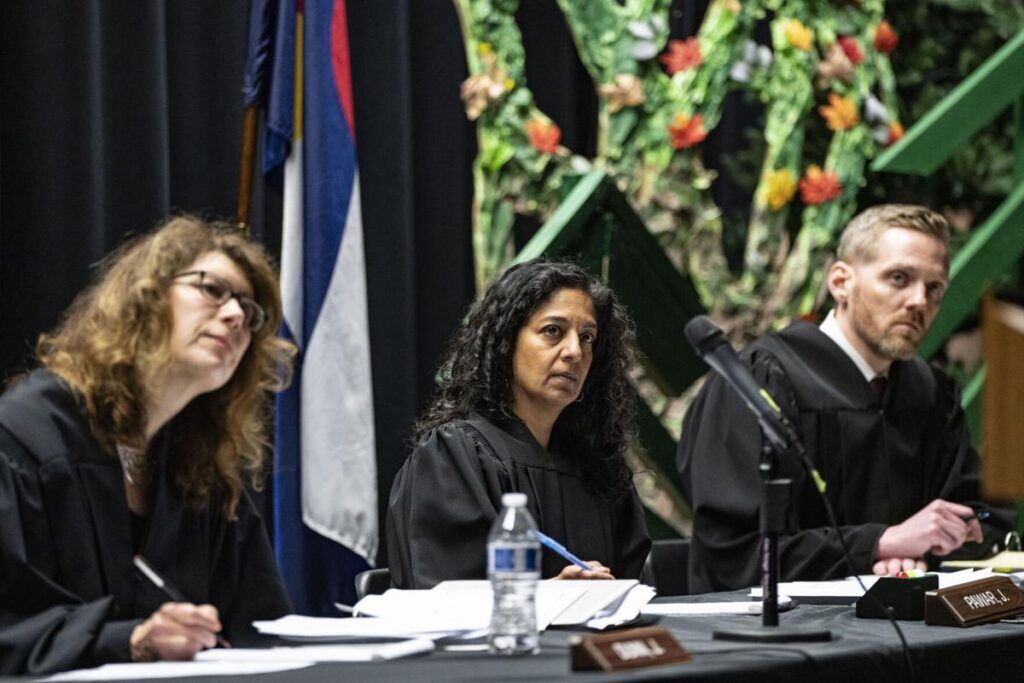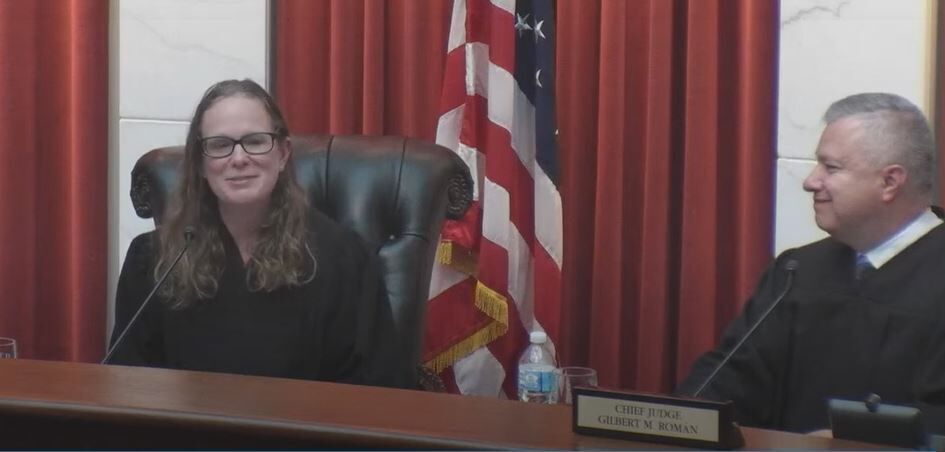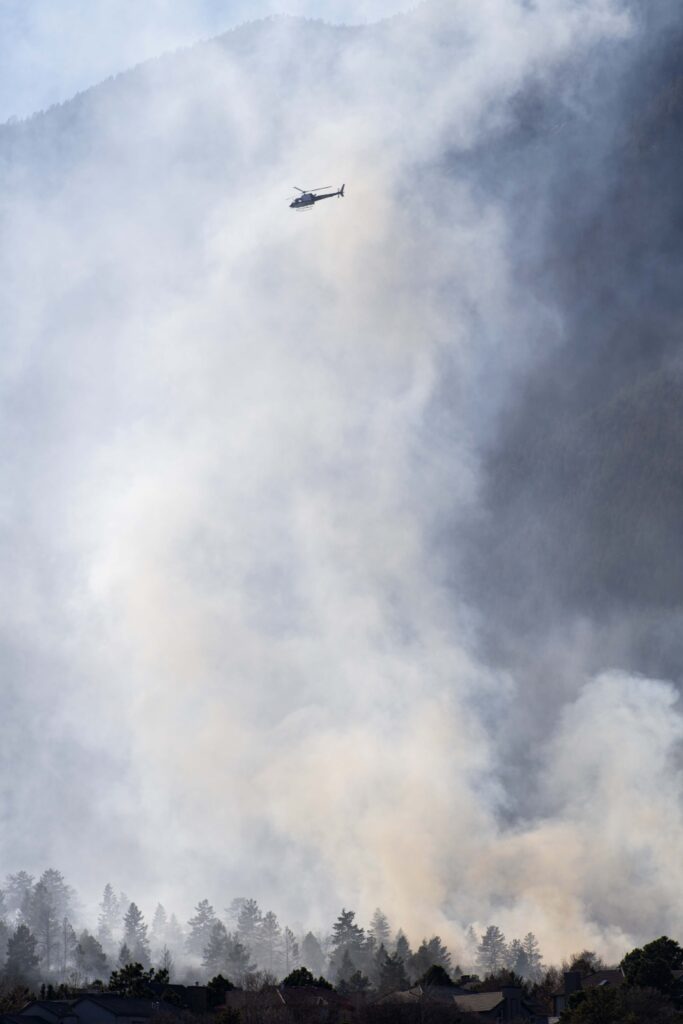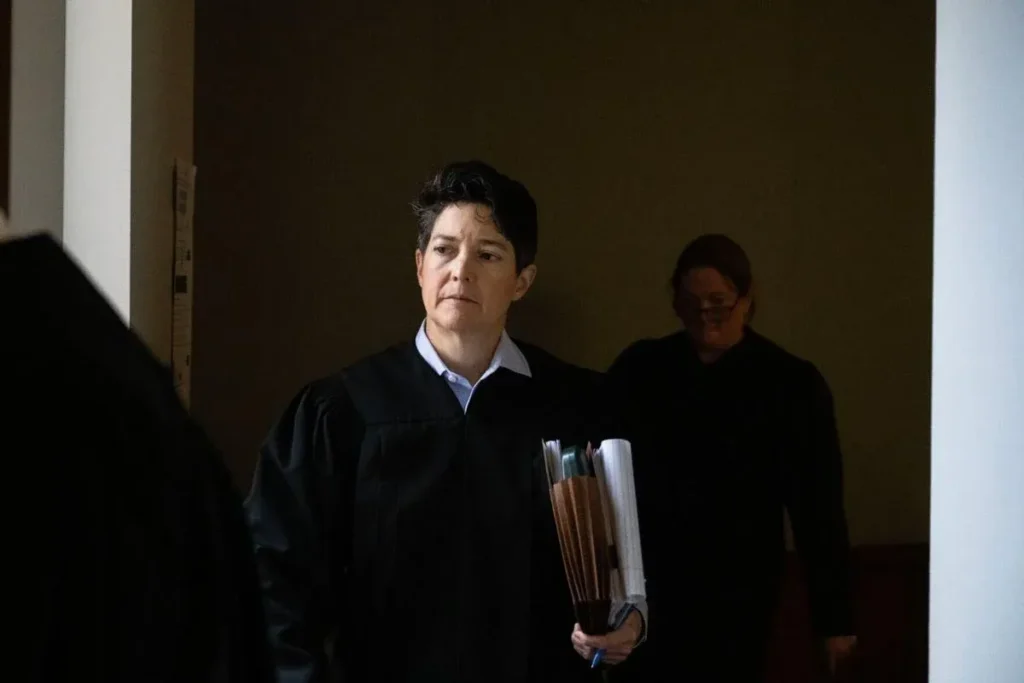FBI seeks suspects in New Mexico wildfires that killed 2, forced thousands to flee | OUT WEST ROUNDUP
NEW MEXICO
FBI seeks suspects in wildfires that killed 2
RUIDOSO — Full-time residents of Ruidoso were allowed to return to their village on June 24 as federal authorities sought to prosecute whoever started a pair of New Mexico wildfires that killed two people and destroyed or damaged more than 1,400 structures.
The FBI said it is offering a reward of up to $10,000 for information leading to the arrests and convictions of those responsible for the South Fork Fire and Salt Fire in southern New Mexico, which forced thousands to flee.
The federal agency also said it was seeking public assistance in identifying the cause of the fires discovered June 17 near the village of Ruidoso.
But the notice also pointedly suggested human hands were to blame, saying the reward was for information leading to the arrest and conviction of “the person or persons responsible for starting the fires.
Colorado to launch first-in-the-nation app that could revolutionize responder safety
Lincoln County Manager Randall Camp said at a news conference on June 22 that “we are approaching a thousand homes lost” in the fires.
President Joe Biden issued a disaster declaration for parts of southern New Mexico on June 20. The move freed up funding and more resources to help with recovery efforts including temporary housing, low-cost loans to cover uninsured property and other emergency work in Lincoln County and on lands belonging to the Mescalero Apache Tribe.
The National Interagency Fire Center said the South Fork Fire, which reached 26 square miles, and the Salt Fire, which spread over 12 square miles, weren’t expected to be fully containment until July 15.
Constitutional lawsuit over oil, gas pollution moves ahead
SANTA FE — A New Mexico judge cleared the way on June 10 for a landmark lawsuit to proceed that alleges the state has failed to meet its constitutional obligations for protecting against oil and gas pollution.
Environmental groups and Native Americans who live near oil wells in the No. 2 producing state in the U.S. initially filed the case in 2023. They are seeking compliance with a “pollution control clause” in the New Mexico Constitution.
Judge Matthew Wilson denied a motion by the state to dismiss the case, saying there needs to be more scrutiny of New Mexico’s responsibilities under the constitution and that granting the state’s request would short-circuit that examination.
Attorneys for the plaintiffs celebrated the judge’s ruling, saying it will allow residents of New Mexico who have been living with the consequences of more oil and gas development in opposite corners of the state to have their day in court.
EPA's methane standards for oil and gas operations face legal challenge by 24 states
A spokesman for Democratic Gov. Michelle Lujan Grisham said that the administration was still reviewing the judge’s decision and intends to “vigorously defend” against the claims.
Lujan Grisham’s administration has in recent years adopted rule changes aimed at limiting emissions from the oil and gas industry. However, environmental groups have raised concerns that enforcement isn’t keeping pace despite fines being levied against out-of-state energy companies and major settlements being inked to address air pollution.
According to the lawsuit, oil production in New Mexico’s portion of the Permian Basin — one of the largest oilfields in the world — has increased nearly tenfold since 2010, leading to a surge in pollution.
ARIZONA
Native Americans’ challenge to power line project dismissed
A U.S. district judge has dismissed claims by Native American tribes and environmentalists who sought to halt construction along part of a $10 billion energy transmission line that will carry wind-generated electricity from New Mexico to customers as far away as California.
Judge Jennifer Zipps said in her ruling issued June 6 that the plaintiffs were years too late in bringing their challenge. It followed an earlier decision in which she dismissed their requests for a preliminary injunction, saying the Bureau of Land Management had fulfilled its obligations to identify historic sites and prepare an inventory of cultural resources.
The disputed stretch of the SunZia transmission line is in southern Arizona’s San Pedro Valley and passes through an area that holds significance for the tribes.
The Tohono O’odham Nation — along with the San Carlos Apache Tribe, the Center for Biological Diversity and Archeology Southwest — sued in January in hopes of stopping the clearing of roads and pads so more work could be done to identify culturally significant sites within a 50-mile stretch of the valley.
Astonished at high cost, Colorado regulators scrutinize Xcel's $3 billion transmission line request
California-based developer Pattern Energy called the ruling a win for the region, citing the jobs and billions of dollars in economic development and investment that will result from the project.
The Tohono O’odham Nation vowed in April to pursue all legal avenues, and environmentalists said an appeal is likely.
The planned 550-mile conduit would carry more than 3,500 megawatts of wind power to 3 million people.
Hikers sickened during trips to scenic waterfalls
Dozens of hikers say they fell ill during trips to a popular Arizona tourist destination that features towering blue-green waterfalls deep in a gorge neighboring Grand Canyon National Park.
Madelyn Melchiors, a 32-year-old veterinarian from Kingman, Arizona, said she was vomiting severely on June 10 and had a fever that endured for days after camping on the Havasupai reservation.
She eventually hiked out to her car in a weakened state through stiflingly hot weather and was thankful a mule transported her pack several miles up a winding trail, she said.
The federal Indian Health Service said on June 13 that a clinic it oversees on the reservation was providing timely medical attention to people who became ill. Environmental health officers with the regional IHS office were sent to Havasupai to investigate the source of the outbreak and to implement measures to keep it from spreading, the agency said.
Now a pack: Colorado confirms birth of first gray wolf pup since reintroduction
While camping, Melchiors said she drank from a spring that is tested and listed as potable, as well as other sources using a gravity-fed filter that screens out bacteria and protozoa – but not viruses.
Thousands of tourists travel to the Havasupai reservation each year to camp near a series of picturesque waterfalls. The reservation is remote and accessible only by foot, helicopter, or by riding a horse or mule.
WYOMING
Attacking grizzly sprays itself with pepper spray
A grizzly that accidentally inflicted itself with a burst of pepper spray while attacking a hiker in Wyoming’s Grand Teton National Park won’t be captured or killed because it may have been trying to protect a cub, park officials said in a statement.
While mauling a hiker on Signal Mountain, the grizzly bit into the man’s can of bear repellent and was hit with a burst of it, causing the animal to flee. The 35-year-old Massachusetts man, who’d pretended to be dead while he was being bitten, made it to safety on May 19 and spent the night in the hospital.
The decision not to pursue the bears, which officials determined behaved naturally after being surprised, also was consistent with attacks that don’t involve campsite raids, eating food left out by people, or similar behaviors that make bears more dangerous.
Rangers track and study many of the Yellowstone region’s 1,000 or so bears but weren’t familiar with the ones responsible for the May 19 attack, according to the statement.
Did wolves restore habitat? CSU study says maybe not
The attack happened even though the victim was carrying bear-repellant spray and made noise to alert bears in the forest, the statement said.
Speaking to rangers afterward, the man said he came across a small bear that ran away from him. As he reached for his bear repellant, he saw a larger bear charging at him in his periphery vision.
He had no time to use his bear spray before falling to the ground with fingers laced behind his neck and one finger holding the spray canister.
The bear bit him several times before biting into the can of pepper spray, which burst and drove the bears away.
The man got to an area with cell phone coverage and called for help. A helicopter, then an ambulance evacuated him to a nearby hospital.
Park officials didn’t release the victim’s name. He was expected to make a full recovery.


